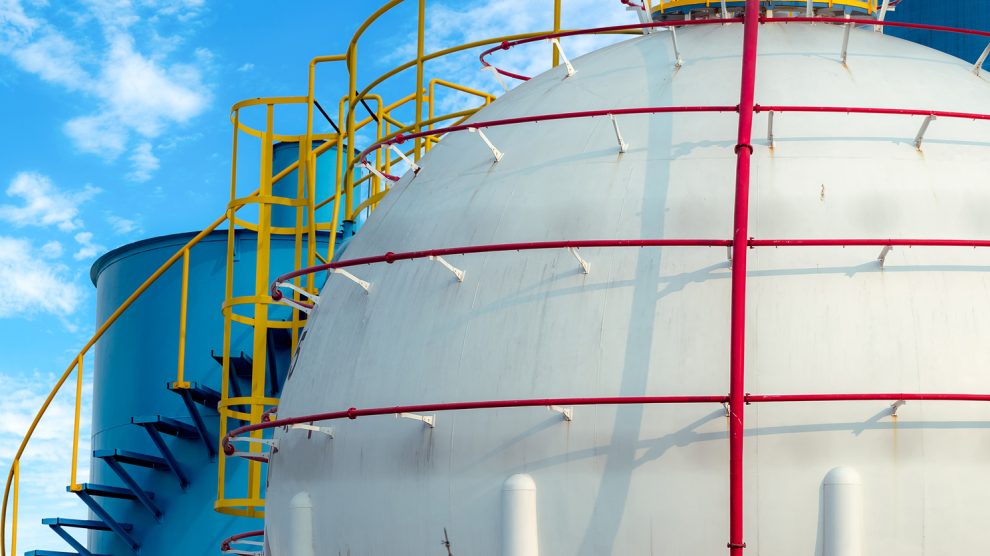With energy prices stabilising and European gas consumption decreasing, LNG terminals risk becoming costly, stranded assets.
In the immediate aftermath of Russia’s invasion of Ukraine in February 2022, Europe witnessed a rapid surge in liquefied natural gas (LNG) terminal construction, not least in Central and Eastern Europe.
As countries scrambled to wean themselves quickly off Russian gas, the urgency to diversify energy sources drove a wave of infrastructure investments. Nations such as Poland and Lithuania expanded their LNG import capacity to ensure energy security, while new terminals sprang up across the region to meet the escalating demand.
- The challenge of financing low-carbon, climate-resilient investments in emerging economies
- In CEE, policy stifles private investment in energy, and hinders the fight against climate change
- Latvia cancels Skulte LNG project, but the Baltic reliance on gas persists
However, just two years later, the ambitious buildout of LNG infrastructure now faces a new challenge: underutilisation.
With energy prices stabilising and European gas consumption decreasing, many of these terminals risk becoming costly, stranded assets. As the global energy landscape shifts towards renewables and efficiency improvements, questions are emerging about the long-term viability of these LNG terminals in a rapidly decarbonising Europe. The rush to build excessive import infrastructure might be coming to an end.
According to a report published this week by the Institute for Energy Economics and Financial Analysis (IEEFA), European Union LNG import terminals are being utilised less as demand for the fuel continues declining across the continent.
The latest version of IEEFA’s European LNG Tracker suggests there may be a growing realisation that Europe’s LNG import infrastructure will become increasingly underutilised as gas use drops further.
After falling to a 10-year low in 2023, Europe’s gas consumption shrank by 5.4 per cent year-on-year in the first half of 2024. EU gas consumption dropped by three per cent.
This translates into a reduced need for LNG imports, which declined by 20 per cent in Europe and 11 per cent in the EU in the first six months of 2024. The continent has likely already passed peak LNG consumption, and IEEFA forecasts that Europe’s demand for the fuel will drop by a further 37 per cent by 2030.
Cancelled projects
LNG import terminals have been impacted by this trend. The average utilisation rate of the EU’s terminals fell from 62.8 per cent in the first half of 2023 to 47.2 per cent in the same period of 2024.
“Europe’s LNG terminal construction spree might be coming to an end, with some countries delaying or cancelling infrastructure. Since the beginning of 2023, new terminals or expansions have been shelved,” says Ana Maria Jaller-Makarewicz, lead energy analyst, Europe, at IEEFA.
Last year saw Latvia’s Skulte terminal lose support from the country’s government because it deemed it no longer necessary. Plans for a second floating storage regasification Unit at Poland’s Gdańsk terminal were shelved due to a lack of interest. Other terminals shelved last year were Dioriga Gas (Greece), Shannon (Ireland) and Vlora (Albania).
Since the beginning of 2022, Europe has increased its LNG import capacity by 23 per cent, or 58 billion cubic metres (bcm). The countries that have added the most are Germany (16 bcm), the Netherlands (13 bcm), Türkiye (7.7 bcm), Italy (7.5 bcm), France (6.5 bcm) and Finland (five bcm).
Despite falling demand, many European countries are still planning investments in new LNG import infrastructure. By 2030, IEEFA forecasts that this could result in three-quarters of the continent’s LNG import capacity being unused.
Russian LNG imports continue rising
Nevertheless, Europe increased its imports of Russian LNG by 11 per cent year-on-year in the first half of 2024. This is despite the EU aiming to end its reliance on Russian fossil fuels by 2027.
Imports of Russian LNG to France rose by 110 per cent, those to Spain were flat and those to Belgium decreased by 16 per cent. These three countries accounted for 87 per cent of Europe’s imports of Russian LNG in the first six months of 2024.
In June, the EU agreed to ban Russian LNG from being transshipped at its ports and sent to third countries. The ban will come into effect from March 2025. Europe increased its transshipments of LNG from Russia’s Yamal terminal by 15 per cent year on year in H1 2024.
Ukraine’s natural gas transit deal with Russia will expire at the end of this year. As Europe’s LNG imports keep decreasing, it is unlikely that the continent’s security of supply will be affected if the agreement is not extended.
Europe reduced its LNG imports by 18 bcm between the first six months of 2023 and the first half of 2024. This decrease is more than the 14.6 bcm of Russian gas exported to Europe via Ukraine in 2023.
Unlike many news and information platforms, Emerging Europe is free to read, and always will be. There is no paywall here. We are independent, not affiliated with nor representing any political party or business organisation. We want the very best for emerging Europe, nothing more, nothing less. Your support will help us continue to spread the word about this amazing region.
You can contribute here. Thank you.



Add Comment